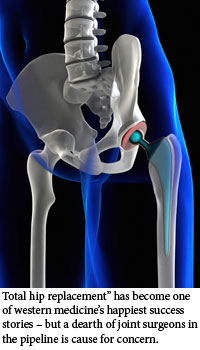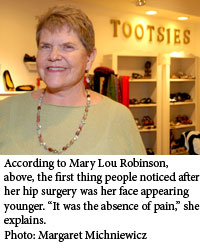Particularly Aware in October of Violence Against Women
I wonder who you were. And I wonder where you are now. Maybe I’ve even exchanged pleasantries with you while waiting in line for lunch downtown, or entering the Flynn for a show. Maybe you have a wife and family now, and perhaps I am even acquainted with your sister. I wonder if you’ve ever shared our story with someone – a therapist, your church minister, buddies at the bar? Or maybe you don’t ever even think about it, have since forgotten?
I remember.
It was an early morning in November of 1984, around the time that the bars closed in downtown Burlington. I had stayed home with my boyfriend for the evening, in the little carriage house cottage set back by itself behind the huge old houses lining Maple and So. Union Streets. I shared the cottage with a friend I call Terri, here. She’d gone out for the evening with a mutual friend and we had gone to sleep before she came home.
Read the full article |
 |
| |
|
Lilly Ledbetter and Diana Levine: Living with the Heartbreak of SCOTUS
In its November 2008 issue, Vermont Woman reported on Diana Winn Levine of
Marshfield and her Supreme Court case against the pharmaceutical company, Wyeth
Corporation. The Vermont musician’s loss of her hand and arm from gangrene, which
developed when a physician’s assistant improperly administered an anti-nausea drug for
her migraines, focused national attention on drug safety. Many feared Levine would not
win because of several earlier, narrowly-decided Supreme Court cases, including the
much-publicized case of [Lilly] Ledbetter v. Goodyear Corporation.
The Supreme Court had ruled in favor of Goodyear and against its former employee,
Ledbetter, in a May 2007 ruling. The 5-to-4 decision upheld an earlier statute of
limitations requiring that pay discrimination lawsuits must be filed within 180 days of the
first discriminatory paycheck. Ledbetter, however, who had received discriminatory pay
for years and only learned about it just before retirement, didn’t give up. She became a
public advocate for equal pay for women and successfully lobbied Congress to pass the
Lilly Ledbetter Fair Pay Act. The act, which President Obama signed into law in January
2009, strengthens the rights of women and minorities in particular by resetting the 180-
day clock with every new discriminatory paycheck.
Read the full article |
 |
| |
|
Paula Poundstone – Positively Hilarious
“How come,” mused professional funny woman Paula Poundstone on her Facebook page recently, “if I can lose weight from lifting weights, I can't lose weight from hauling around my own fat thighs?”
Poundstone – “Stand-up Comic – Mother – Writer”, as her Web site proclaims her – will bring smiles and belly laughs to Vermont in October when she takes the stage at the Flynn Theater in Burlington. Performing comedy for 30 years now, Poundstone is legendary for her ability to improvise – to the point that some people leave her shows convinced that the exchanges between Poundstone and her audience could only be the result of “plants” in the crowd. But for devotees of the weekly radio quiz show “Wait, Wait… Don’t Tell Me!” on National Public Radio, it’s clear that Poundstone, who is a regular panelist, has a sharp and intelligent wit. Cracking jokes on the spot in response to this current events quiz, with no advance notice or sneak peeks at the questions, Poundstone is quick on the droll draw.
Insightfully observant of the humor to be found everywhere from the kitchen table to the White House, Poundstone, 49, reveals the hilarity inherent in the human condition. And while no one is safe from her mischievous observations, her style does not rely on aggression or profanity. She is far likelier to bellow with laughter at herself than snicker viciously at someone else. Her candid and self-deprecating sense of humor was perhaps no more evident than in one particular line she incorporated into her act following a widely-publicized incident in 2001 in which she was court-ordered to attend Alcoholics Anonymous meetings and pursue substance abuse treatment. “Kinda blew the hell out of the second ‘A’!”, she quipped.
Read the full article |
 |
| |
|
Hip to the State of Orthopedic Surgery
Mary Lou Robinson, owner of the Burlington shoe store Tootsies of Vermont, didn’t even hesitate when her orthopedic surgeon and her chiropractor both looked at an X-ray of her left hip and advised her to get it replaced. During childhood, Robinson had sustained a series of mini-traumas to the hip, including ski and sledding accidents and being hit by a car. In recent years, says the 63-year-old, she compounded those injuries with the simple but repetitive act of getting into and out of her car.
By the time of her visit to Fletcher Allen Health Care’s orthopedics department last year, Robinson says, “I had no hip joint at all. It was bone on bone.” That is, the joint’s cartilage had worn away, causing the ball-and-socket parts to grind on each other. The immense pain this caused grew “exponentially worse” over the next four months until she could get into surgery. She adds, “If it had to have been postponed another couple weeks, I wouldn’t have been able to go to work.”
Despite the wait, the procedure was a success. The shoe maven can now walk and perform everyday motions without pain. “People noticed my face first,” recalls Robinson. “They’d say, ‘You look so young!’ It was the absence of pain on my face.” Eight months after her operation, Robinson still goes to physical therapy once a month, but only to work on her gait and stride. “I’m an orthopedic’s dream,” she says gleefully.
The truth is that Robinson’s positive experience with total hip replacement (THR), sometimes called total hip arthroplasty, is now run-of-the-mill. THR has become one of Western medicine’s happiest success stories. The typical candidate hobbles around for months with chronic hip pain caused, most often, by osteoarthritis – the result of wear and tear on the joints over time. (Other causes include injury, hip dysplasia, and rheumatoid arthritis.) After an hour-long procedure with a 95 percent success rate, followed by a few months in physical therapy, the patient can walk painlessly upstairs for the next 15 years or more.
Read the full article |
 |
| |
|
Hip Replacement Surgery: The Next Step, Rehab and Going Home
There is a simple prescription for successful rehabilitation after hip replacement surgery: Do your prescribed exercises faithfully; take your pain medication before the discomfort is too great; plan ahead for your home recovery period; and most importantly, don’t compare yourself with your cousin Ellen’s recovery, as each person, and each surgery, is unique.
David Copley, a physical therapist at the Visiting Nurses Association in Colchester, explains how each patient’s post-operative plan is developed. “An evaluation is done by the physician, specific to each individual. Some people go home direct from the hospital, some go to inpatient rehab, and some go to what is called a sub-acute rehabilitation facility. People have varying degrees in their need for nursing care and physical and occupational services.”
Nursing care may consist of medication checks, dressing changes, and blood pressure checks. Physical therapy focuses on specific exercises. And occupational therapists will work with the patient on activities of daily living. “With hip precautions, one can’t bend over to put on shoes and socks, so they must use tools and techniques to get dressed and bathe independently,” Copley explains.
Read the full article |
 |
 |
Rising Star Jennifer Hartswick – Blowing Her Own Horn, and How!
Hartswick: it’s the perfect name for a woman whose musical career has grown out of the connections of the heart. An extraordinary trumpet player as well as a captivating vocalist and composer, Northeast Kingdom-born Jennifer Hartswick is a fast-rising star in the jazz and R&B worlds. Schooled in classical and jazz, with an equal comfort zone in R&B, soul, and funk, she covers the map.
For Hartswick, playing music is about the moment shared with her fellow musicians and the audience. “What I do has nothing to do with making albums,” she declares. “It’s all about the experience you have when it’s a live show, the experience we have onstage and the interaction with the audience, the experience they have watching. There’s nothing I enjoy more than that.” Possessed of bright eyes, a quick smile, and an easy laugh, the musician exudes a natural warmth and friendliness.
Hartswick takes an old chestnut like “My Funny Valentine” and breathes fresh life into what is all too often a stale rendition of a too-familiar melody. Originality and freshness are at the heart of every arrangement. “You Can’t Take That Away From Me,” “Summertime,” “Gee Baby, Ain’t I Good to You” all sound like you’re hearing them for the first time. She makes them her own.
Read the full article |
|
|